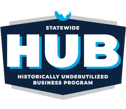The accreditation inspectors are making the rounds, and this time, queries also include USP <800>. In other words, it’s go time! Are you ready?
As you’ve prepared for this day, we’ve also published content to support you in this tremendous effort. In 2021, we published a blog, “From Our Customers: The Top 8 Questions To Expect In Joint Commission Inspections.” It continues to be one of our most popular blogs, and now readers are asking for an update as they face an impending inspection.
Expect More of the Same from Accreditors
We’re back now with the latest on inspections. Frankly, we’re hearing that the inspectors continue to inquire about much of the same, including the list in the image.

However, based on what customers tell us, there is a greater emphasis on USP <800> and creating a safe environment for employees within accreditation inspections. The latest feedback shared in the recent Pharmacy Purchasing & Products USP <800> update webinar confirms these anecdotes. PP&P said that accreditors are inspecting for USP <800> compliance between 25% and 50% of the time. PP&P respondents also noted that the top three issues covered are #1 Training, #2 Receiving/Storage of Hazardous Drugs and #3 Policies and Procedures.
How to Ace that Inspection
Unlike the State Boards of Health, CMS or other accreditors, the Joint Commission is notorious for querying a nurse on duty about a tracer hazardous drug. The inspector is evaluating how quickly the nurse can access the necessary information and the thoroughness of the documentation.  As we shared in a previous blog, one of our clients is using an innovative way to fast-track access to safety information. This hospital leverages the ease and accessibility of QR codes to link directly to several of their lists on Rhazdrugs and Formweb, including hazardous medications, high-alert medications, “do not crush,” “do not tube,” drug shortage resources, and medication use guidelines. They hang posters like the one below in the medication rooms where busy nurses can quickly scan and access the necessary safety information. They also come in handy when a Joint Commission inspector asks that same busy nurse to locate any of the above policies and procedures.
As we shared in a previous blog, one of our clients is using an innovative way to fast-track access to safety information. This hospital leverages the ease and accessibility of QR codes to link directly to several of their lists on Rhazdrugs and Formweb, including hazardous medications, high-alert medications, “do not crush,” “do not tube,” drug shortage resources, and medication use guidelines. They hang posters like the one below in the medication rooms where busy nurses can quickly scan and access the necessary safety information. They also come in handy when a Joint Commission inspector asks that same busy nurse to locate any of the above policies and procedures. .png?width=425&height=425&name=Rpharmy%20Quotes%20(4).png) Because Cisplatin is a widely used antineoplastic agent and a benchmark hazardous drug for Joint Commission queries related to safe handling, administration, and disposal practices in healthcare settings, we’ll use it as an example. When an inspector asks a nurse about the safety policies for Cisplatin regarding administration, patient care activities, and disposal, a QR code on a poster or flyer could link them directly to screens like the ones shown here. It’s a direct link to the information the inspector is looking for.
Because Cisplatin is a widely used antineoplastic agent and a benchmark hazardous drug for Joint Commission queries related to safe handling, administration, and disposal practices in healthcare settings, we’ll use it as an example. When an inspector asks a nurse about the safety policies for Cisplatin regarding administration, patient care activities, and disposal, a QR code on a poster or flyer could link them directly to screens like the ones shown here. It’s a direct link to the information the inspector is looking for.
In fact, during a recent Joint Commission inspection, a Rhazdrugs user in California showed the Rhazdrugs solution to the inspector, and he was so impressed that he plans to showcase Rhazdrugs as a best practice for healthcare workers' safety. It doesn’t get much better than that!
So, when the Joint Commission or any accreditor asks you or other employees where the Patient Care Activities for Cisplaton are, a quick scan of a QR code can check that one off the list and make you a USP <800> and employee safety hero.
Care to Share?
We’d love to hear from you about a recent accreditation inspection. Is what we stated above true to your experience? What queries surprised you? Were you fully prepared? Please share with us so we can help improve safety for the entire healthcare community. Rest assured, we will keep your responses anonymous if you prefer. Email us at info@rpharmy.com.
As always, our Safety First Blog Library is free and accessible without a form of any kind. You’ll find several years of content meant to support the healthcare industry as you continue to work through USP <800> requirements. Be sure to check out the still relevant “From Our Customers: The Top 8 Questions To Expect In Joint Commission Inspections.


